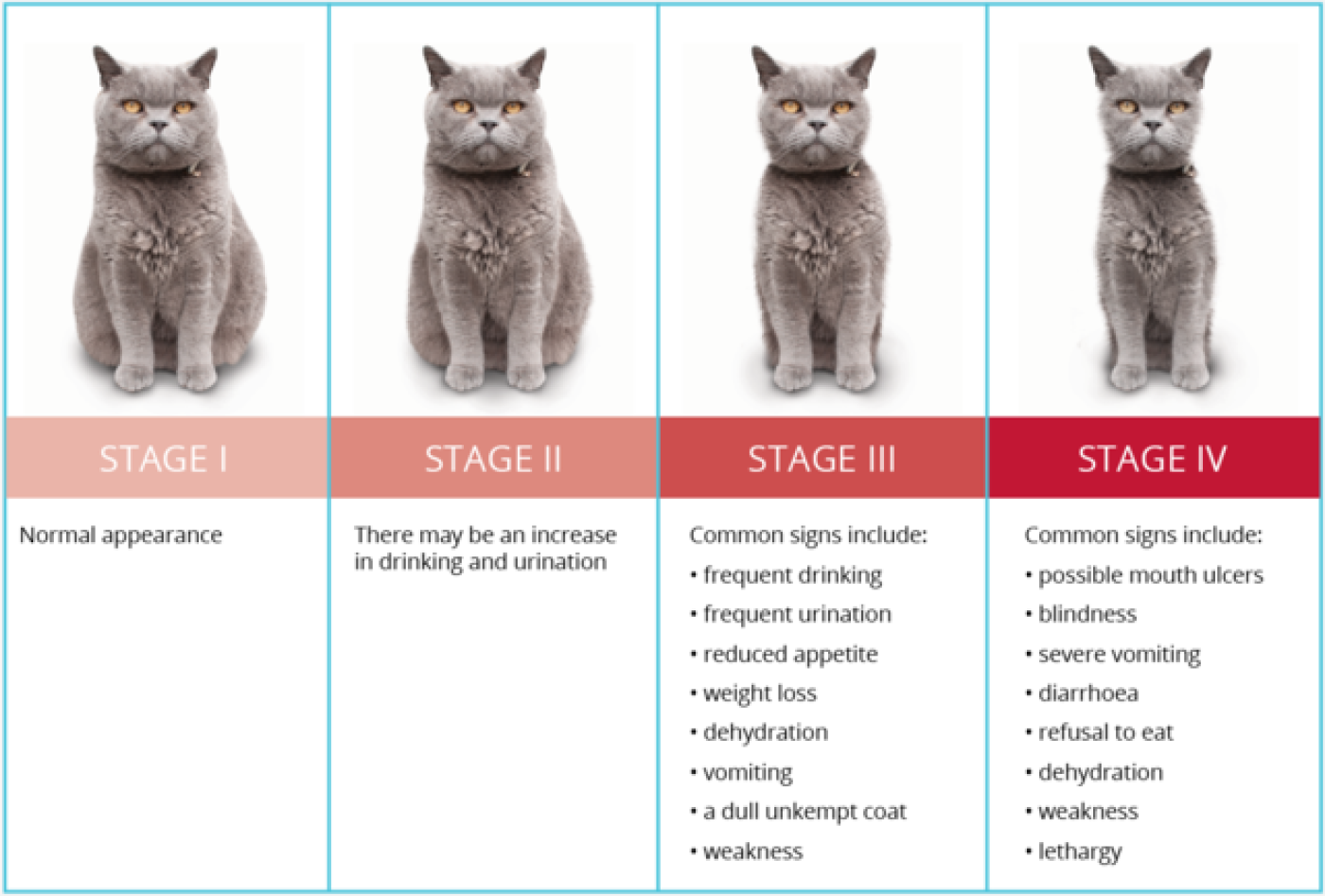Chronic Renal Insufficiency

Chronic kidney disease ( also known as renal insufficiency) is one of the most common diseases seen in older cats. Just like people, cats have 2 kidneys. The kidneys are responsible for filtering the blood and removing some of the toxins, as well as assisting in maintining hydration and producing urine.
As cats become older, their kidney function gradually declines. More than 90% of cats over the age of 10 will have some level of kidney dysfunction; however we only start to see clinical signs of renal disease when more than 70% of kidney function has been lost. This means we often do not see obvious signs of the disease until the kidneys are severely damaged and the cat is quite unwell. If corrected, cats can often survive and thrive quite happily for years with well managed chronic renal insufficiency.
- What to look for at home:
- A sudden increase in thirst
- Urinating larger volumes or more frequently
- Weight loss often with loss of muscle tone
- Poor hair quality
- Halitosis (bad breath) occasionally with oral ulcers
- Variable appetite
- Vomiting or diarrhoea
- Lethargy and depression
If you are concerned about any of these signs, please contact the clinic immediately and bring your cat in for a check up.
What can your vet do to test for Chronic Renal Insufficiency?
Renal disease can be difficult to diagnose in the early stages, but with regular testing we can monitor for changes that may indicate underlying disease requiring treatment including:
- Regular wellness checkups with your vet and weight checks.
- Regular blood tests (at least annually, ideally every 6 months) to assess for elevations in certain blood products that indicate kidney function (Urea, Creatinine and phosphate),
- Regular urinalysis every 6 months checking for normal concentrating ability, protein levels, signs of infection and the urine protein:creatinine ratio
- Regular blood pressure monitoring every 6 months
What can you do to prevent renal disease in your cats?
1. Early detection through regular checkups and tests and commencing early treatment if we are concerned about renal disease.
2. Monitoring for any signs of renal disease at home and bringing them in for checks immediately.
3. Ensuring adequate water supply. Older cats often have arthritis and are unwilling to move as much as they were in their youth, so having multiple bowls of clean fresh water around the house in easy reach of your cat’s favourite locations is a great idea. Cats also love flowing water and often prefer to drink from fountains rather than bowls. Wet food can also increase the amount of water in your cat’s diet.
4. Start on a kidney specific diet that is low in phosphate and protein. Diet plays a huge role in slowing the progression of chronic kidney disease. A premium, kidney specific diet such as Royal Canin Renal or Hill’s k/d can help manage chronic renal disease quite effectively until the later stages of the disease by reducing the amount of waste by-products they have to remove and thus preventing the kidneys from having to work as hard.
In summary – through monitoring at home, regular testing, appropriate diet and promoting water consumption can all help to prevent the progression and clinical signs of chronic kidney disease in your cat.
